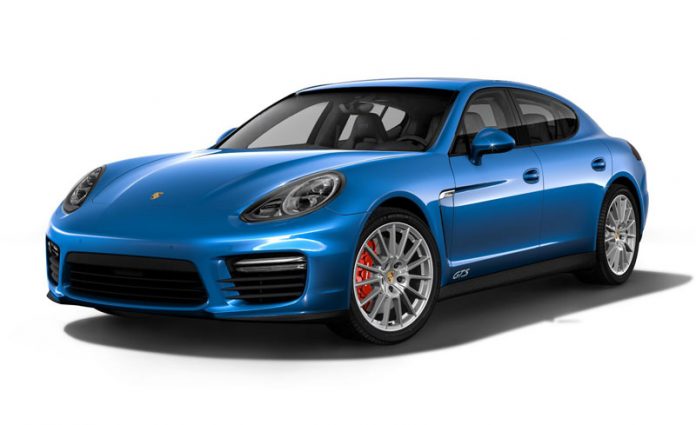The new Porsche Panamera reconciles two contrasting characteristics more than ever before: the performance of a genuine sports car and the comfort of a luxury saloon. It is a Gran Turismo that has been rethought and realigned. The second generation of the Panamera is advancing to become a performance icon of the luxury class.
Easy on the Eyes
The second generation of the Panamera, which Porsche launched at a lavish event in Berlin, takes everything a step forward: It’s slightly bigger, it’s more powerful, it’s said to perform better, and it’s fitted with a cutting-edge man-machine interface. What’s more, it looks better—a lot better. When we rode along on a prototype drive in South Africa earlier this year, we got a sense of the much-improved proportions of the new car. Its roofline has been lowered over the rear passengers, and the shape of the side-window opening resembles that of the 911.
Now the camouflage has been lifted entirely, and we really like what we see. The LED headlights, available in various levels of technical sophistication, look futuristic, and the taillights resemble the 911’s. They stretch all the way across the Panamera’s rear, and the effect is as stunning as it is ultramodern.
The Panamera is the first model built off the Volkswagen Group’s MSB architecture (Modularer Standard-Baukasten, or modular standard architecture—with “standard” here indicating a front-engine, rear- or four-wheel-drive layout). The powertrains are new. At launch, there will be a 2.9-liter twin-turbo V-6 in the Panamera 4S, rated at 440 horsepower, and a 4.0-liter twin-turbo V-8 in the Panamera Turbo, good for 550 horsepower. Europe also gets a 422-hp 4.0-liter V-8 turbo diesel; we don’t, but down the road, we will get an entry-level 3.0-liter turbo gasoline V-6 with around 350 horsepower, as well as a hybrid. A 3.0-liter V-6 TDI, which is the only carryover engine, will remain absent from the U.S. Expect a Turbo S again, this time with at least 600 horsepower, and a further entry-level model—designed for maximum efficiency but not hybridized—could come with rear-wheel drive. Initially, all Panameras will feature all-wheel drive and a ZF-sourced eight-speed dual-clutch automatic.
The new Panamera’s performance encroaches on supercar territory. The 4S, which shares its engine with the upcoming Audi RS4 and RS5, charges from zero to 60 mph in a claimed 4.2 seconds; the Turbo manages it in 3.6 seconds, and in both cases, the optional Sport Chrono package shaves off a further 0.2 second thanks to its launch-control function. Stated top speed is 180 mph for the 4S and 190 mph for the Turbo. But fuel consumption is said to be lower by over 10 percent in both models.















